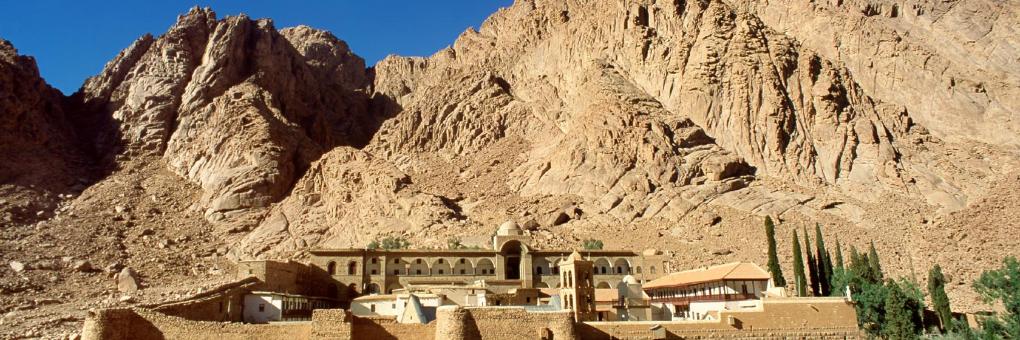The most stunning locations within the Sinai Region of Egypt are undoubtedly Mount Sinai and Saint Catherine’s Monastery. Sitting majestically within this diverse location, it is simply magical with endless views and intense sunsets and sunrises
The traditional Mount Sinai is the name of a collection of peaks, sometimes called the Holy Mountains. At its southern end is Mount Musa (the mountain of Moses), traditionally believed to be the place where Moses communicated with God and received the Ten Commandments.
Mount Musa (Moses Mountain) is not the highest peak in Sinai. That honour belongs to nearby Mount Catherine which, at over 2500 metres high, is also the highest mountain in Egypt.
On the slopes of Mount Sinai, where Moses received the Ten Commandments from God, lies one of the oldest functioning monasteries in the world. Commonly known as Saint Catherine’s Monastery, its actual name is the “Sacred Monastery of the God-Trodden Mount Sinai”. It was built by the order of the Byzantine Emperor Justinian I (527–565 AD) in 548–565 ADin order to house the monks that had been living in the Sinai Peninsula since the 4th century AD.
The eponymous Saint Catherine of Alexandria was martyred in the early 4th century AD. The monastery bears her name because its monks discovered her incorrupt body on nearby Mount Saint Catherine in the 9th century AD, where it had been deposited by angels after her martyrdom.
The monastery encompasses multiple structures, the most important of which is the Church of the Transfiguration of Christ the Savior, which itself contains nine smaller churches. One of these is the Church of the Burning Bush, from which God had spoken to the prophet Moses. Saint Catherine’s Monastery also includes ten other churches, the monks’ accommodations, a refectory, an olive press, ossuaries, a Fatimid mosque from the 12th century AD, and a library that boasts rare books and6,000 manuscripts.
Climbing:
The shortest route (but the steepest), known as Siket Syidna Musa, stairway consisting of 3,750 steps, known as the Steps of Penitence. These were cut out of the rock by the monks of St Catherine’s Monastery, located at the northeastern foot of the mountain.
Many people prefer to climb during darkness; it’s partly to avoid the heat of the day, but mainly to be at the summit in time to see the glorious sunrise beneath them.
The longer route (El Bashait) may be climbed at night, either on foot or on the back of a camel. It takes about two and a half hours to make the climb, and there are little stalls along the way where climbers can buy food and water.
Church of St Catherine’s MonasteryAround the monastery, St Catherine’s National Park is a fascinating area that supports an amazing diversity of plant and animal life, some of which are found nowhere else in the world. The mountains are home to Sinai Rose Finch from Asia, the Ibex and Wolf from Europe along with the striped Hyena and Tristram’s Grackle which came from Africa. Several species are unique to the National Park including two species of snakes and about twenty plant species, such as a beautiful native primrose. Through clever management, the Park is able to keep its unique character while allowing visitors to see its wonders.





 And then Add to Home Screen.
And then Add to Home Screen.